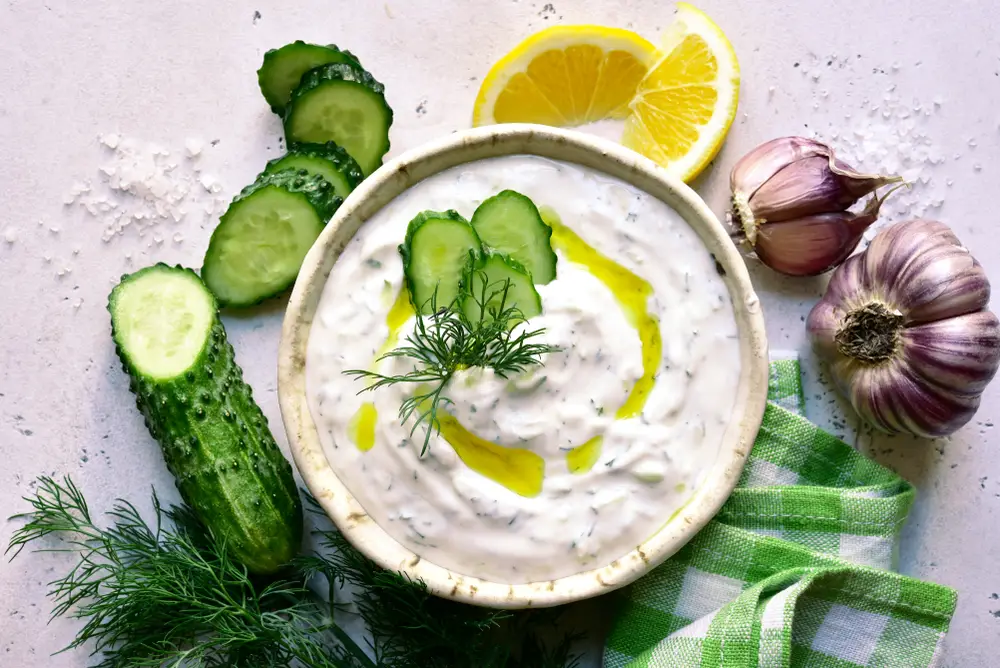Monosodium glutamate, better known as MSG, has spent decades in the crosshairs of public suspicion. For many, the mere mention of MSG conjures images of headaches, nausea, and that vaguely ominous “Chinese Restaurant Syndrome.” It’s the ingredient you’ve been told to avoid at all costs—lurking in takeout containers, processed snacks, and seasoning packets. But is MSG really the dietary villain it’s made out to be, or have we been fed a decades-long myth? Let’s dig into the science, history, and cultural baggage surrounding MSG to uncover the truth.
What Is MSG, Anyway?
At its core, MSG is a simple compound: a sodium salt of glutamic acid, an amino acid naturally present in many foods.
Glutamate, the key player in MSG, is a building block of proteins and a neurotransmitter in the human body. It’s found in abundance in tomatoes, cheese, mushrooms, seaweed, and even human breast milk. MSG itself is a white, crystalline powder first isolated in 1908 by Japanese chemist Kikunae Ikeda, who was trying to pinpoint what gave dashi—a traditional seaweed broth—its uniquely savory taste.
Ikeda identified this flavor as “umami,” now recognized as the fifth basic taste alongside sweet, sour, salty, and bitter.
To replicate it, he combined glutamic acid with sodium, creating MSG—a flavor enhancer that amplifies the savory notes in food. By 1909, MSG hit the market under the brand name Ajinomoto, and its use spread globally, especially in East Asian cuisines. Today, it’s produced through fermentation of starches like corn or sugarcane, a process not unlike making yogurt or beer.
So, if MSG is derived from natural sources and mimics a naturally occurring compound, why does it have such a bad rap? The answer lies less in science and more in a mix of history, misinformation, and cultural bias.
The Birth of a Controversy: “Chinese Restaurant Syndrome”
The MSG scare began in 1968 with a letter published in the New England Journal of Medicine. Dr. Robert Ho Man Kwok, a Chinese-American physician, described feeling unwell—numbness, palpitations, and weakness—after eating at Chinese restaurants. He speculated that MSG, a common ingredient in the dishes, might be to blame. The letter wasn’t a formal study; it was anecdotal, a casual observation. But it struck a nerve. Readers and researchers latched onto the idea, and soon, reports of similar symptoms flooded in. The term “Chinese Restaurant Syndrome” (CRS) was coined, cementing MSG’s reputation as a culinary bogeyman.
The timing couldn’t have been worse. In the late 1960s, the United States was grappling with shifting attitudes toward immigration and foreign cuisines. Chinese food, once a novelty, was becoming mainstream, but it carried an air of “otherness.” MSG, heavily associated with Chinese cooking, became an easy scapegoat for discomfort with unfamiliar flavors. Media outlets ran with the story, amplifying fears without much evidence. By the 1970s, MSG was Public Enemy No. 1 in the food world, blamed for everything from headaches to heart palpitations.
But here’s the catch: Dr. Kwok’s letter wasn’t conclusive. It was a hypothesis, not proof. And the science that followed didn’t exactly back it up.
What Does the Science Say?
Over the decades, MSG has been poked, prodded, and tested more than most food additives. The results? Surprisingly consistent—and not nearly as damning as the headlines would suggest.
In the 1970s and ‘80s, early animal studies raised red flags. High doses of MSG injected into newborn mice caused brain lesions, sparking fears of neurotoxicity. But these studies had flaws: the doses were massive—far beyond what any human would consume—and the delivery (injections) bypassed digestion entirely. When researchers tried feeding MSG to animals in realistic amounts, the effects vanished. Humans, it turns out, metabolize glutamate efficiently through the gut, keeping blood levels stable even after a hearty bowl of ramen.
Human studies followed. Double-blind, placebo-controlled trials—the gold standard of research—tested whether MSG triggered the symptoms of CRS. In one 1995 study published in the Journal of the American Medical Association, participants who reported sensitivity to MSG were given either MSG or a placebo. The result? No consistent link between MSG and symptoms like headaches or flushing. Other studies echoed this: small subsets of people reported mild reactions, but the effects were inconsistent and didn’t hold up under scrutiny.
The U.S. Food and Drug Administration (FDA) stepped in, classifying MSG as “generally recognized as safe” (GRAS) in 1959—a status it retains today. The FDA, along with the World Health Organization and the European Food Safety Authority, has set no strict limit on MSG intake, noting that typical dietary amounts pose no risk. For context, a teaspoon of MSG (about 4 grams) contains less sodium than a teaspoon of table salt (6 grams), and glutamate levels in a MSG-seasoned dish are often lower than in a slice of Parmesan cheese.
So why do some people still swear MSG makes them sick? The answer might lie in psychology, not physiology.
The Nocebo Effect and Culinary Scapegoating
If MSG doesn’t cause widespread harm, what’s behind the persistent complaints? Enter the nocebo effect—the evil twin of the placebo effect. When people expect something to harm them, they’re more likely to notice or attribute symptoms to it. Decades of anti-MSG messaging have primed consumers to blame it for any post-meal discomfort, whether it’s a headache from dehydration or bloating from overeating.
Food historian Ian Mosby argues that MSG’s vilification also reflects cultural biases. In his research, he notes that CRS emerged during a period of unease about Chinese immigration in the U.S. and Canada. Associating MSG with “exotic” cuisines made it an easy target, while similar ingredients in Western foods—like hydrolyzed vegetable protein, which also contains glutamate—escaped scrutiny. It’s telling that a bowl of MSG-laden wonton soup might raise eyebrows, but a glutamate-rich plate of spaghetti with marinara and Parmesan rarely does.
MSG in the Modern Diet
MSG isn’t just a relic of 20th-century takeout. It’s everywhere—often hiding in plain sight. Beyond Asian restaurants, it’s a staple in processed foods: potato chips, canned soups, salad dressings, and fast-food burgers. Labels might not always scream “MSG”; instead, you’ll see “natural flavors” or “yeast extract,” which deliver the same umami punch. The global MSG market is worth billions, with production topping 3 million tons annually, mostly in Asia.
Ironically, the “clean eating” movement has fueled a paradoxical MSG renaissance. As consumers demand fewer artificial additives, chefs and home cooks are turning to MSG as a minimalist way to boost flavor without a laundry list of ingredients. Celebrity chefs like David Chang of Momofuku fame have championed MSG, calling it a misunderstood hero. Chang’s argument? It’s no less natural than salt or sugar, and it makes food taste better—full stop.
The Health Debate: Beyond Headaches
Beyond CRS, MSG has faced other accusations: obesity, asthma, even cancer. Let’s break them down.
- Obesity: Some observational studies, like a 2008 one in Obesity, linked MSG consumption to weight gain in Chinese adults. But correlation isn’t causation. Participants who ate more MSG also consumed more processed, calorie-dense foods. Controlled trials haven’t replicated this effect.
- Asthma: A 1980s study suggested MSG might trigger asthma attacks, but later research, including a 1998 review, found no consistent evidence. Most experts now dismiss the connection.
- Cancer: No credible studies link MSG to cancer. Glutamate is a normal part of human metabolism, and the body doesn’t distinguish between dietary MSG and naturally occurring glutamate.
One lingering concern is sodium. MSG contains about one-third the sodium of table salt, but in high amounts, it could contribute to sodium-related issues like hypertension. Still, most people don’t sprinkle MSG like salt—it’s a pinch, not a pour.
Taste Test: Why We Love It
Why does MSG endure despite the controversy? Because it works. Umami isn’t just a buzzword; it’s a sensory experience that makes food more satisfying. Glutamate receptors on our tongues detect it, signaling richness and depth. A dash of MSG can transform a bland broth into something crave-worthy, balancing flavors in a way salt alone can’t.
This isn’t new knowledge. Ancient Romans used garum, a fermented fish sauce loaded with glutamate, to season their feasts. Parmesan, soy sauce, and anchovies—all umami powerhouses—owe their allure to the same compound. MSG just distills that magic into a convenient form.
The Verdict: Bad Guy or Misunderstood Ally?
So, is MSG really bad for you? The overwhelming scientific consensus says no—not for the vast majority of people in typical amounts. Regulatory agencies worldwide agree it’s safe, and decades of research have debunked the worst myths. If you’re among the tiny fraction who might be sensitive, symptoms are mild and rare, often indistinguishable from a placebo response.
The real harm of MSG might be its stigma. It’s a lightning rod for our anxieties about processed food, globalization, and “chemicals” in our diets. Yet it’s no more artificial than baking soda and far less mysterious than many additives we consume daily. The truth is, MSG’s biggest sin might be its name—monosodium glutamate sounds like a lab experiment, not a flavor found in nature.
Next time you dig into a bowl of ramen or crunch on a flavored chip, consider this: MSG isn’t out to get you. It’s just doing its job—making food taste good. Maybe it’s time we let it off the hook.


















